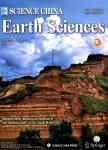Vegetation physiological parameter setting in the Simple Biosphere model 2(SiB2) for alpine meadows in the upper reaches of Heihe river
Vegetation physiological parameter setting in the Simple Biosphere model 2(SiB2) for alpine meadows in the upper reaches of Heihe river作者机构:State Key Laboratory of Remote Sensing Science Beijing Normal University and Institute of Remote Sensing and Digital Earth CAS School of Geography Beijing Normal University Beijing Key Laboratory of Environmental Remote Sensing and City Digitalization Department of Civil Engineering Monash University
出 版 物:《Science China Earth Sciences》 (中国科学(地球科学英文版))
年 卷 期:2015年第58卷第5期
页 面:755-769页
核心收录:
学科分类:07[理学] 0708[理学-地球物理学] 0704[理学-天文学] 0713[理学-生态学]
基 金:supported by the National Natural Science Foundation of China(Grant Nos.91125002,40971221) FP7 CEOP-AEGI(Coordinated Asia European Long-Term Observing System of the Qinhai Tibet Plateau Hydro-meteorological Processes and the Asian Monsoon System with Ground Satellite Image data and numerical simulation)project
主 题:高寒草甸植被 参数设置 生理过程 生物圈模式 黑河上游 SIB2 最适生长温度 土壤热通量
摘 要:Land surface process modeling of high and cold area with vegetation cover has not yielded satisfactory results in previous applications. In this study, land surface energy budget is simulated using a land surface model for the A rou meadow in the upper-reach area of the Heihe River Basin in the eastern Tibetan Plateau. The model performance is evaluated using the in-situ observations and remotely sensed data. Sensible and soil heat fluxes are overestimated while latent heat flux is underestimated when the default parameter setting is used. By analyzing physical and physiological processes and the sensitivities of key parameters, the inappropriate default setting of optimum growth and inhibition temperatures is identified as an important reason for the bias. The average daytime temperature during the period of fastest vegetation growth(June and July) is adopted as the optimum growth temperature, and the inhibition temperatures were adjusted using the same increment as the optimum temperature based on the temperature acclimation. These adjustments significantly reduced the biases in sensible, latent, and soil heat fluxes.



